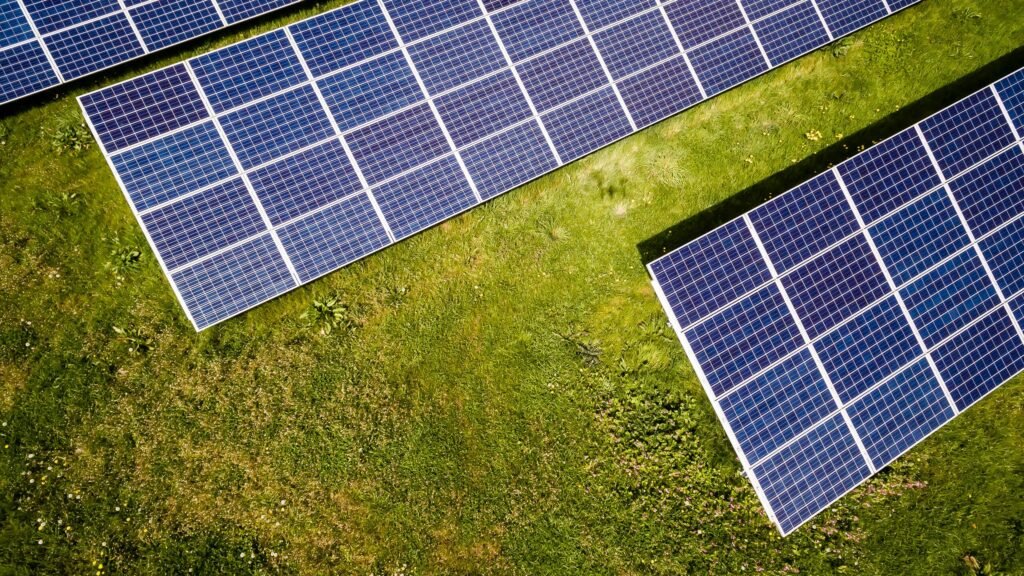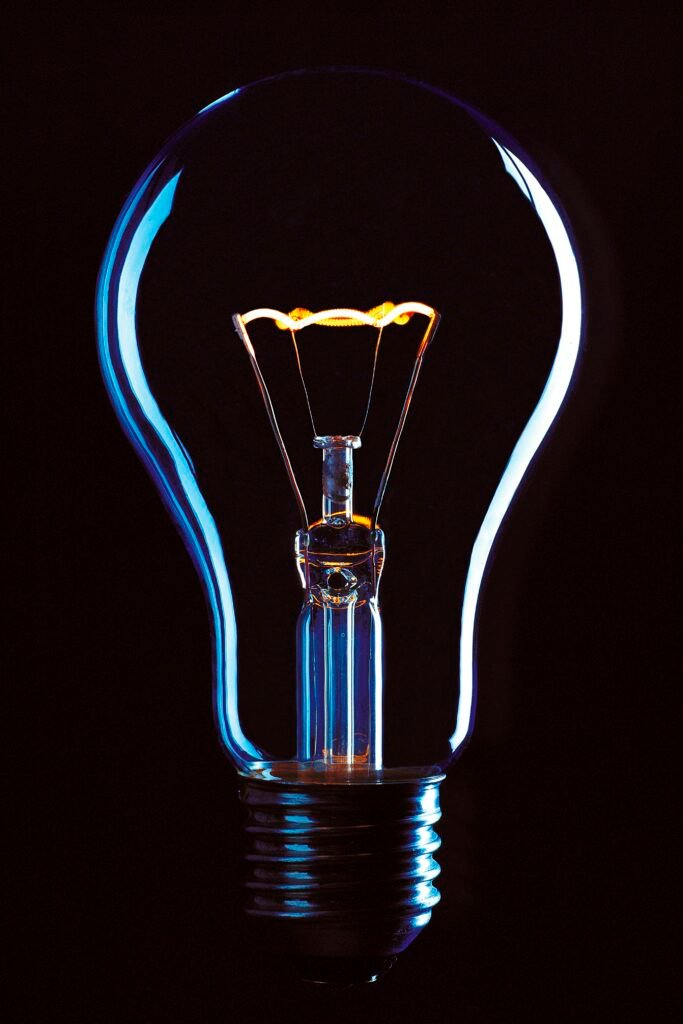Imagine a world where lighting is not dependent on electricity grids, where you can illuminate your space efficiently and sustainably. Introducing efficient and eco-friendly solar lighting solutions – a breakthrough in the field of lighting technology. These solar-powered lighting solutions harness the power of the sun, providing you with a reliable and cost-effective way to light up your surroundings. No more worries about electricity bills or power outages, as these innovative solutions offer a sustainable alternative that is both environmentally friendly and economically viable.

This image is property of pixabay.com.
check out our product reviews
Advantages of Solar-Powered Lighting Solutions
Solar-powered lighting solutions offer a multitude of advantages that make them an increasingly popular choice for both residential and commercial lighting needs. These advantages include their environmentally friendly nature, cost-effectiveness, ease of installation and maintenance, flexible placement options, and freedom from dependence on the electricity grid.
Environmentally friendly
One of the primary advantages of solar-powered lighting solutions is their eco-friendliness. Solar lighting systems harness the power of the sun to generate electricity, eliminating the need for fossil fuels and reducing carbon emissions. By using renewable energy, solar lights help to mitigate the environmental impact of traditional lighting solutions.
Cost-effective
Solar-powered lighting solutions can also result in significant cost savings. While the initial investment may be higher than traditional lighting systems, solar lights eliminate the need for ongoing electricity costs. Once installed, they operate autonomously and rely solely on solar energy, making them incredibly cost-effective in the long run. Additionally, solar lights are eligible for various government incentives and grants, further reducing the financial burden on individuals and businesses.
Easy installation and maintenance
Another advantage of solar-powered lighting solutions is their ease of installation and maintenance. Unlike traditional lighting systems that require extensive electrical infrastructure, solar lights can be easily installed in almost any location with adequate sunlight. The absence of complex wiring and electrical connections makes the installation process straightforward and hassle-free. In terms of maintenance, solar lights require minimal upkeep. Regular cleaning and occasional battery replacement are typically the only maintenance tasks required, making them a low-maintenance lighting solution.
Flexible placement options
Solar-powered lighting solutions also offer flexibility in terms of placement. As long as there is sufficient sunlight, solar lights can be installed in remote locations without access to the electricity grid. This makes them an ideal lighting solution for areas where traditional lighting infrastructure is not feasible, such as rural areas, parks, and remote construction sites. Solar lights can be easily relocated if needed, providing flexibility in adjusting lighting arrangements according to changing requirements.
No dependence on electricity grid
One of the most significant advantages of solar-powered lighting solutions is their independence from the electricity grid. Solar lights operate entirely off-grid, relying solely on solar energy to power their lighting fixtures. This makes them a reliable lighting solution, even during power outages or natural disasters when traditional lighting systems may fail. Solar lights provide a sense of security and preparedness, ensuring that you have access to lighting regardless of the grid’s condition.
Components of Solar Lighting Systems
Solar lighting systems consist of several key components that work together to harness solar energy and provide lighting. These components include solar panels, batteries, lighting fixtures, controllers, and rooftop mounting systems.
Solar panel
The solar panel is the heart of any solar lighting system. It converts sunlight into electricity through the photovoltaic effect. Solar panels consist of multiple solar cells connected together, each capable of producing a certain amount of electricity. The size and capacity of the solar panel depend on the lighting requirements and the amount of sunlight available. High-quality solar panels with efficient energy conversion are essential for maximizing the performance of solar lighting systems.
Battery
The battery in a solar lighting system serves as a storage unit for the electricity generated by the solar panel. It stores the excess electricity produced during the day so that it can be used to power the lighting fixtures at night or during cloudy days when solar energy is limited. The battery capacity determines how long the lights can operate without direct sunlight. It is essential to choose batteries with sufficient storage capacity to meet the lighting requirements of the area.
Lighting fixture
The lighting fixture in a solar lighting system is responsible for illuminating the desired area. LED lights are commonly used in solar lighting solutions due to their energy efficiency and longevity. LED lights consume significantly less energy compared to traditional lighting sources, making them ideal for solar-powered systems. The lighting fixture is connected to the battery and controlled by the controller, providing illumination whenever required.
Controller
The controller is the brain of a solar lighting system. It regulates the flow of electricity between the solar panel, battery, and lighting fixture. The controller ensures that the battery is charged efficiently, prevents overcharging or deep discharging, and controls the timing and intensity of the lighting. Some advanced controllers also incorporate additional features like motion sensors and timers, further enhancing the functionality of solar lighting systems.
Rooftop mounting system
The rooftop mounting system is used to securely attach the solar panel to the rooftop or any other suitable surface. It provides stability and optimum positioning for the solar panel to receive maximum sunlight for efficient energy generation. Rooftop mounting systems are designed to be durable and withstand various weather conditions to ensure the longevity and performance of the solar lighting system.

This image is property of pixabay.com.
check out our product reviews
Types of Solar Lighting Solutions
Solar lighting solutions come in various forms, each designed for specific lighting needs and applications. The most common types of solar lighting solutions include solar garden lights, solar street lights, solar flood lights, solar spotlights, and solar lanterns.
Solar garden lights
Solar garden lights are a popular choice for both residential and commercial outdoor lighting. They are compact and can be easily installed in garden beds, pathways, or outdoor living spaces. Solar garden lights are typically stake lights or post lights that provide soft ambient lighting, creating a warm and inviting atmosphere. They enhance the aesthetic appeal of gardens, landscapes, and outdoor areas while minimizing energy consumption.
Solar street lights
Solar street lights are an efficient and sustainable lighting solution for public roads, highways, and parking lots. They offer bright illumination, ensuring enhanced visibility and safety during night-time. Solar street lights are generally pole-mounted, allowing for maximum exposure to sunlight. With motion sensor capabilities and timers, solar street lights can provide effective lighting while conserving energy and reducing light pollution.
Solar flood lights
Solar flood lights are designed to provide high-intensity lighting over a wide area. They are commonly used for security purposes, illuminating large outdoor spaces, and highlighting architectural features. Solar flood lights are powerful, adjustable lights that can be mounted on walls, poles, or other structures. They allow for flexibility in directing light precisely where it is needed, ensuring optimal security and visibility.
Solar spotlights
Solar spotlights are ideal for accent lighting and highlighting specific areas or objects. They are often used to showcase landscape features, sculptures, or signage. Solar spotlights are compact and can be easily mounted or installed in the ground. They provide a focused beam of light, adding drama, beauty, and functionality to outdoor spaces.
Solar lanterns
Solar lanterns are portable lighting solutions that offer versatility and convenience. They are ideal for camping, picnics, and other outdoor activities where access to electricity may be limited. Solar lanterns are lightweight and often feature a built-in solar panel to charge the battery during the day. They provide illumination at night and can be easily repositioned as needed.
Factors to Consider when Choosing Solar Lighting Solutions
When selecting solar lighting solutions, several factors should be taken into consideration to ensure optimal performance and satisfaction. These factors include sunlight availability, panel efficiency and capacity, battery storage capacity, lighting requirements and intensity, maintenance requirements, and warranty.
Sunlight availability
The first and most crucial factor to consider is the availability of sunlight in the desired location. Solar lighting systems rely on sunlight to generate electricity, so it is essential to choose locations with ample sunlight exposure for maximum energy production. Factors such as shading, tree coverage, and climate patterns should be assessed to determine the suitability of an area for solar lighting.
Panel efficiency and capacity
The efficiency and capacity of the solar panel directly impact the overall performance of the solar lighting system. Higher efficiency panels convert a larger percentage of sunlight into electricity, maximizing energy production. The capacity of the solar panel should be matched to the lighting requirements of the area to ensure sufficient energy generation. It is advisable to select reputable brands and high-quality panels to achieve the best results.
Battery storage capacity
The battery storage capacity determines how long the solar lighting system can operate without direct sunlight. It is essential to choose batteries with adequate storage capacity to meet the lighting requirements during periods of limited sunlight, such as cloudy days or nights. Assessing the energy consumption needs of the area and selecting batteries with suitable storage capacity is crucial to avoid interruptions in lighting.
Lighting requirements and intensity
The lighting requirements and intensity of the area play a vital role in selecting the appropriate solar lighting solution. Different areas may have varying illumination needs, and the lighting fixtures should be chosen accordingly. Factors such as brightness, color temperature, and beam angle should be considered to ensure the desired lighting effect is achieved.
Maintenance and warranty
Considering the maintenance requirements and warranty of the solar lighting system is essential to ensure long-term reliability and satisfaction. Solar lighting systems generally require minimal maintenance, but regular cleaning and occasional battery replacement may be necessary. It is important to choose systems with reliable warranties to protect against any unforeseen issues or defects.

This image is property of pixabay.com.
Installation and Maintenance of Solar Lighting Systems
Proper installation and maintenance are crucial for the optimal performance and longevity of solar lighting systems. Following the recommended guidelines and best practices can ensure that the system operates efficiently and reliably.
Choosing the right location for solar panels
Selecting an appropriate location for solar panels is essential to maximize sunlight exposure and energy generation. The panels should be positioned in an area with minimal shading and obstruction to ensure maximum sunlight absorption. Proper orientation and tilt angle should be determined based on the latitude and available sunlight direction to optimize energy production.
Ensuring proper wiring and connection
Proper wiring and connection are critical for the safe and efficient operation of solar lighting systems. Following the manufacturer’s instructions and electrical codes, all connections should be securely and correctly made. Any exposed wiring should be protected from environmental elements to prevent damage or accidents.
Regular cleaning and maintenance
Regular cleaning and maintenance of solar panels are necessary to maintain their efficiency and performance. Dust, dirt, and debris can accumulate on the panels over time, reducing their ability to absorb sunlight effectively. Cleaning should be performed with non-abrasive materials and in accordance with the manufacturer’s recommendations to avoid damaging the panels.
Battery maintenance and replacement
The battery is a vital component of a solar lighting system and requires regular maintenance to ensure its longevity and optimal performance. Periodic inspections should be conducted to check the battery’s condition, connections, and charge level. If signs of degradation or reduced capacity are observed, the battery should be replaced promptly to prevent interruptions in lighting.
Upgrading and expanding the system
Solar lighting systems can be easily upgraded and expanded to accommodate changing lighting requirements and preferences. Additional solar panels, batteries, or lighting fixtures can be added to existing systems to provide increased capacity or coverage. It is important to ensure compatibility and proper integration of new components with the existing system.
Enhancing Efficiency and Eco-friendliness of Solar Lighting Solutions
There are various ways to enhance the efficiency and eco-friendliness of solar lighting solutions, further maximizing their benefits and reducing their environmental impact.
Use of energy-efficient LED lights
Opting for energy-efficient LED lights in solar lighting systems can significantly reduce energy consumption and enhance overall system efficiency. LED lights consume less energy compared to traditional lighting sources while providing the same or better illumination. They have a longer lifespan, resulting in reduced maintenance and replacement costs.
Optimizing solar panel placement and angle
Proper placement and angling of solar panels can maximize their exposure to sunlight, resulting in optimal energy generation. Understanding the sun’s path and adjusting the panels accordingly can significantly enhance the efficiency of solar lighting systems. Utilizing technology tools and software can aid in determining the ideal placement and angle for solar panels.
Implementing smart control systems
Integrating smart control systems into solar lighting solutions can automate and optimize their operation. Smart control systems allow for programmable lighting schedules, motion sensing capabilities, and remote monitoring and control. These features optimize energy utilization and enhance user convenience, ensuring that lighting is provided only when needed.
Incorporating motion sensors and timers
Motion sensors and timers can be incorporated into solar lighting systems to further conserve energy. Motion sensors detect movement and activate the lights, ensuring that they are only illuminated when necessary. Timers can be used to schedule lighting based on specific timeframes, such as dusk to dawn, to avoid unnecessary energy consumption during daylight hours.
Integration with other renewable energy sources
Solar lighting solutions can be integrated with other renewable energy sources to create a comprehensive sustainable energy system. Hybrid systems that combine solar energy with wind or hydroelectric power can provide a more reliable and consistent energy supply. This integration ensures that lighting requirements can be met even when sunlight is limited.
Case Studies: Successful Implementation of Solar Lighting Solutions
Several successful case studies highlight the effectiveness and benefits of solar lighting solutions in real-world applications.
Solar-powered street lighting in India
In India, solar-powered street lighting has been implemented in various cities and rural areas to provide reliable lighting solutions. These solar street lighting systems have transformed the lives of many communities, especially in remote and off-grid regions. By replacing traditional streetlights with solar-powered alternatives, India has significantly reduced its dependence on conventional energy sources and improved energy efficiency.
Solar garden lighting in eco-friendly communities
Eco-friendly communities worldwide have embraced solar garden lighting as a sustainable and aesthetically pleasing lighting solution. These communities incorporate solar garden lights in their landscaping designs to illuminate pathways, gardens, and common areas. Solar garden lighting not only reduces carbon emissions but also enhances the natural beauty of the surroundings, creating a harmonious and eco-conscious environment.
Solar lighting in off-grid areas
Solar lighting solutions have been instrumental in providing lighting to off-grid areas without access to the electricity grid. These areas often lack basic infrastructure, making traditional lighting installations impractical. Solar lights, with their easy installation and low maintenance requirements, have proven to be a reliable and sustainable solution for off-grid communities. They enhance safety, productivity, and the overall quality of life for people living in these areas.
Future Trends in Solar Lighting Solutions
The future of solar lighting solutions is promising, with advancements in technology and increasing emphasis on sustainable living. Several trends are shaping the future of solar lighting solutions, offering even more efficient, integrated, and versatile lighting options.
Advancements in solar panel technology
Ongoing advancements in solar panel technology are expected to result in more efficient and compact panels. These innovations will allow for increased energy generation and improved aesthetics. New materials and designs will further enhance the reliability and performance of solar panels, making solar lighting systems more appealing and accessible.
Integration with energy storage systems
The integration of solar lighting systems with energy storage systems, such as batteries or supercapacitors, will enable increased energy autonomy and flexibility. Energy storage systems can store excess solar energy during the day for use during the night or periods of limited sunlight. This integration ensures a continuous and reliable supply of lighting, regardless of the external conditions.
Internet of Things (IoT) connectivity
The Internet of Things (IoT) is revolutionizing various industries, and solar lighting solutions are no exception. IoT connectivity allows for remote monitoring, control, and optimization of solar lighting systems. It enables real-time performance monitoring, automatic fault detection, and intelligent energy management. With IoT connectivity, solar lighting systems can be seamlessly integrated into smart city infrastructures, further enhancing their efficiency and functionality.
Solar-powered outdoor charging stations
Solar-powered outdoor charging stations are emerging as a significant trend in solar lighting solutions, catering to the increasing demand for mobile device charging in outdoor spaces. These charging stations utilize solar energy to power multiple charging ports, providing a convenient and eco-friendly way to charge smartphones, tablets, and other devices. Solar-powered charging stations enhance the usability and versatility of outdoor areas, ensuring that visitors stay connected while making efficient use of renewable energy.
Smart city integration
As cities strive to become smarter and more sustainable, the integration of solar lighting solutions into smart city initiatives is gaining momentum. Smart city integration involves the amalgamation of various technologies, such as IoT, renewable energy, and data analytics, to optimize city infrastructure and services. Solar lighting systems play a vital role in smart city initiatives by providing efficient, environmentally friendly, and cost-effective lighting solutions that can be seamlessly integrated with other smart city components.
Conclusion
Solar-powered lighting solutions offer numerous advantages, including environmental friendliness, cost-effectiveness, easy installation and maintenance, flexible placement options, and freedom from dependence on the electricity grid. By harnessing the power of the sun, solar lighting systems provide reliable and sustainable lighting solutions for both residential and commercial applications.
The components of solar lighting systems, including solar panels, batteries, lighting fixtures, controllers, and rooftop mounting systems, work together to convert sunlight into electricity and illuminate various areas.
Different types of solar lighting solutions, such as solar garden lights, solar street lights, solar flood lights, solar spotlights, and solar lanterns, cater to specific lighting needs and applications.
When choosing solar lighting solutions, factors such as sunlight availability, panel efficiency and capacity, battery storage capacity, lighting requirements and intensity, maintenance requirements, and warranty should be considered.
Proper installation and maintenance, including choosing the right location for solar panels, ensuring proper wiring and connection, regular cleaning and maintenance, battery maintenance and replacement, and system expansion, are crucial for the optimal performance and longevity of solar lighting systems.
To enhance the efficiency and eco-friendliness of solar lighting solutions, it is recommended to use energy-efficient LED lights, optimize solar panel placement and angle, implement smart control systems, incorporate motion sensors and timers, and integrate solar lighting with other renewable energy sources.
Successful case studies in various locations demonstrate the effectiveness and benefits of solar lighting solutions, especially in street lighting, eco-friendly communities, and off-grid areas.
Future trends in solar lighting solutions include advancements in solar panel technology, integration with energy storage systems, IoT connectivity, solar-powered outdoor charging stations, and smart city integration.
In conclusion, solar-powered lighting solutions offer a sustainable, cost-effective, and environmentally friendly alternative to traditional lighting systems. With ongoing advancements and increasing focus on efficiency and eco-friendliness, the future of lighting is undeniably solar.
check out our product reviews










